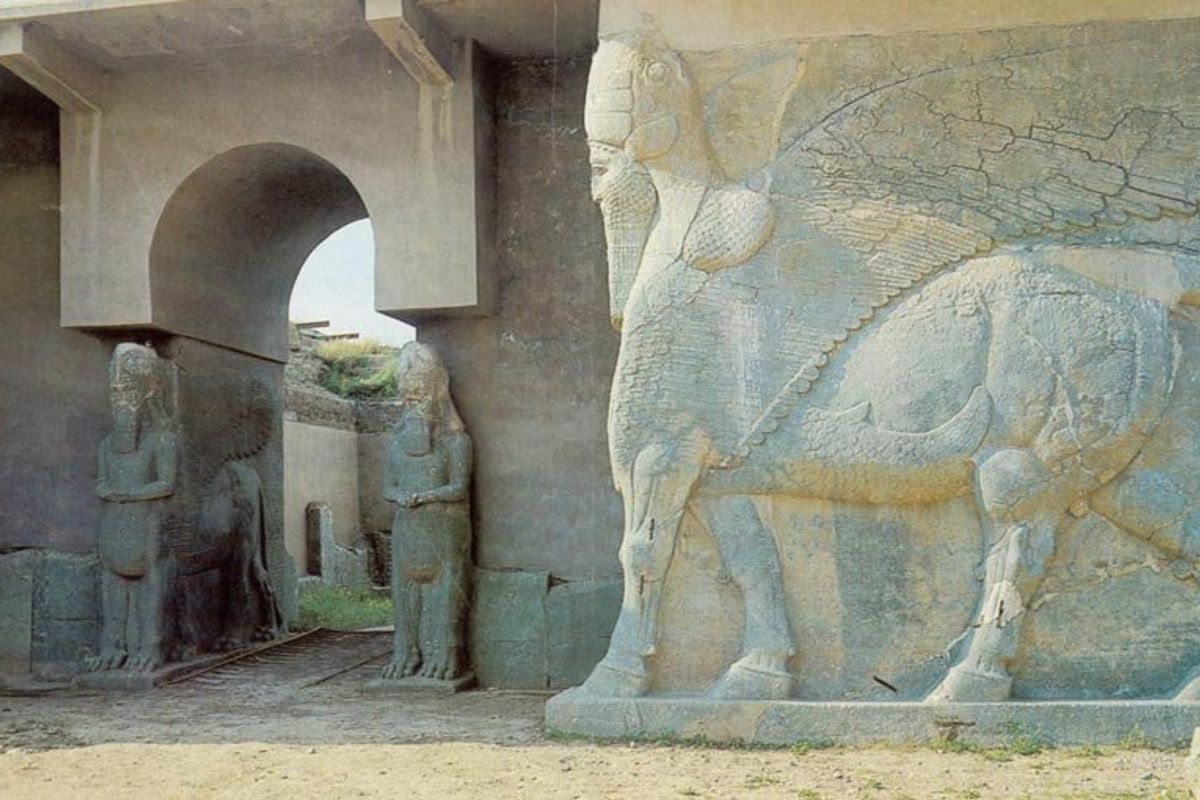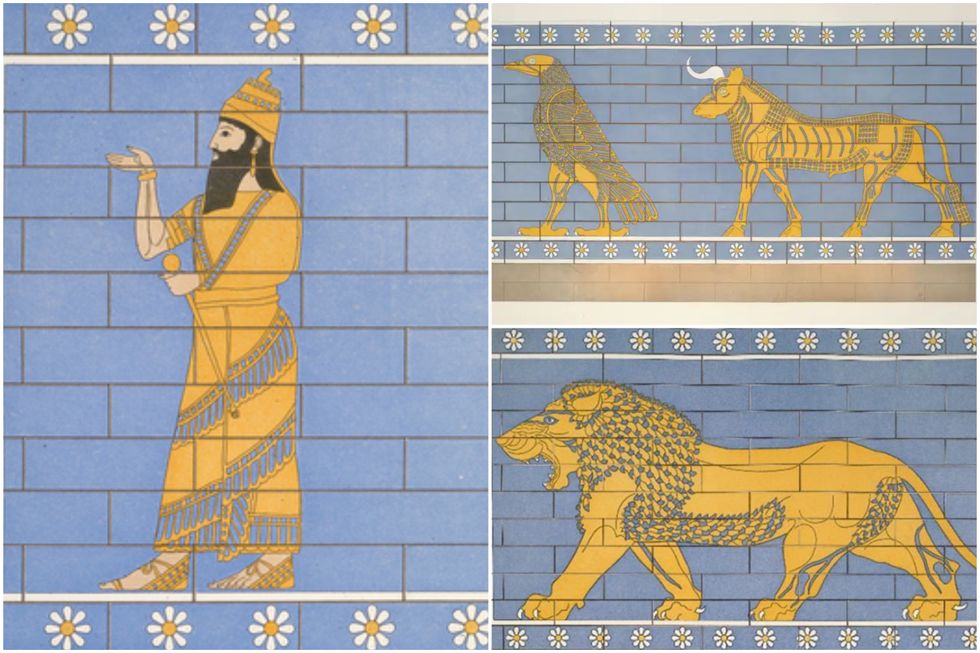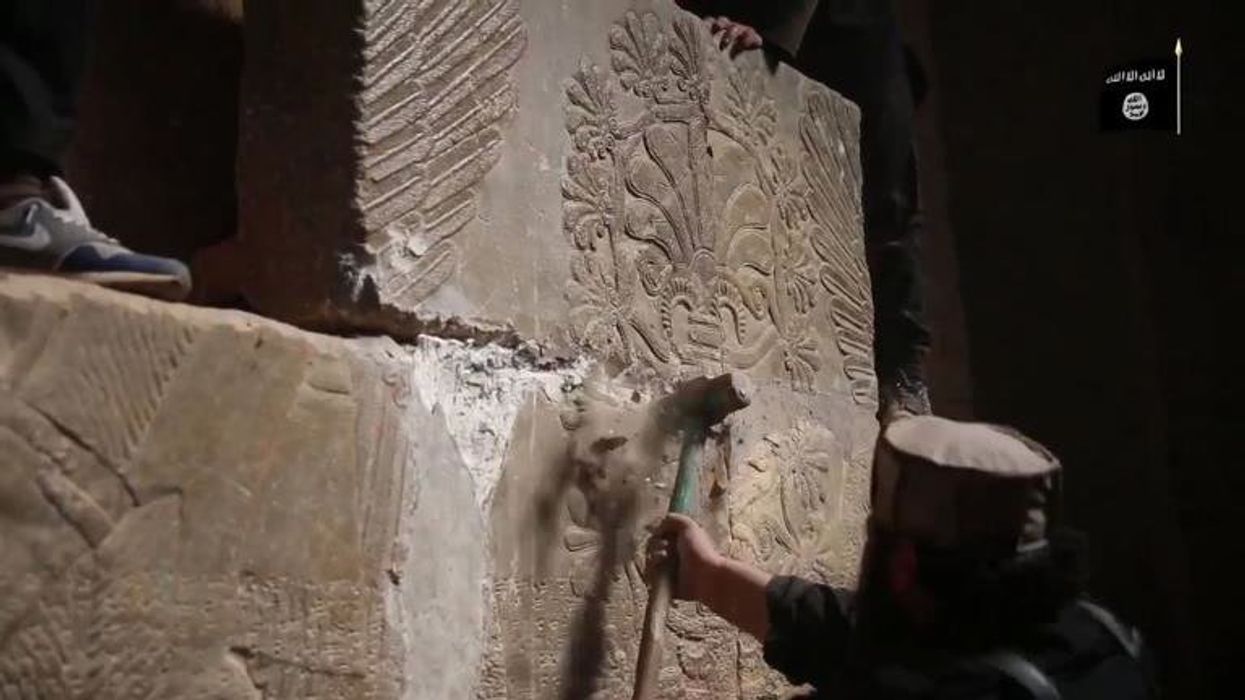Harriet Brewis
May 20, 2024
IS video shows destruction of ancient Assyrian city
content.jwplatform.com
An ancient code that has mystified experts for more than a century has finally been cracked.
The series of symbols appear in temples across Dūr-Šarrukīn, which was once the capital of Assyria.
The Assyrian empire, which stretched across swathes of the Middle East between the 14th and 7th centuries BCE, is considered the greatest of the Mesopotamian empires thanks, largely, to its formidable military power and technological advancements.
"This region of the world, which includes present-day Iraq and parts of Iran, Turkey and Syria, is often referred to as the 'cradle of civilisation'," Assyriologist and historian Martin Worthington, of Trinity College Dublin, said in a statement.
"It is where cities and empires were born, and its story is a huge part of human history."

Worthington has spent years working on the enigmatic cryptograms, which were uncovered when the buried ruins of Dūr-Šarrukīn were excavated during the 19th and 20th century.
In their short form, they consist of a lion, a fig tree, and a plough. In their longer form, five symbols appear in sequence, with the lion followed by a bird and a bull, then the tree and then the plough.
Whilst historians have long felt confident that the symbols related to King Sargon II, who ruled from 721–704 BCE, their precise meaning – whether they represented the king’s authority, the gods, supernatural forces or were simply an attempt at Egyptian hieroglyphics – remained unclear, until now.
Worthington pulled together clues to deduce that the pictures sound out Sargon’s name – a theory that was first put forward (but not explored) in 1948.
He expanded on this idea by proving that the icons could also be a nod to celestial constellations, paying tribute to the sovereign king by writing out his name in the stars, thereby associating him with the gods.
His findings are particularly significant because, although previous hypotheses have linked the symbols to the king or the night sky – particularly given the blue and yellow colours often used in their design – this is the first time anyone has put the two theories together.
"The fact that [the idea] works for both the five-symbol sequence and the three-symbol sequence, and that the symbols can also be understood as culturally appropriate constellations, strikes me as highly suggestive," Worthington said.
"The odds against it all being happenstance are – forgive the pun – astronomical."

In a paper on his discovery, Worthington explains how these representations would have worked. For example, the Assyrian word for "tree" sounds similar to "jaw", which is the name of a constellation the people of the time would've been familiar with, as Science Alert notes.
Moreover, these constellations were linked to the ancient gods, adding a further layer of meaning.
"The effect of the five symbols was to place Sargon's name in the heavens, for all eternity – a clever way to make the king's name immortal," Worthington concluded.
"And, of course, the idea of bombastic individuals writing their name on buildings is not unique to ancient Assyria."
Although Mesopotamian civilisations are part of our distant past, they’re still considered hugely important to our understanding of many aspects of human history.
This is why experts like Worthington still dedicate so much time today to understanding how they lived, thought and ruled.
Sign up for our free Indy100 weekly newsletter
How to join the indy100's free WhatsApp channel
Have your say in our news democracy. Click the upvote icon at the top of the page to help raise this article through the indy100 rankings
Top 100
The Conversation (0)













